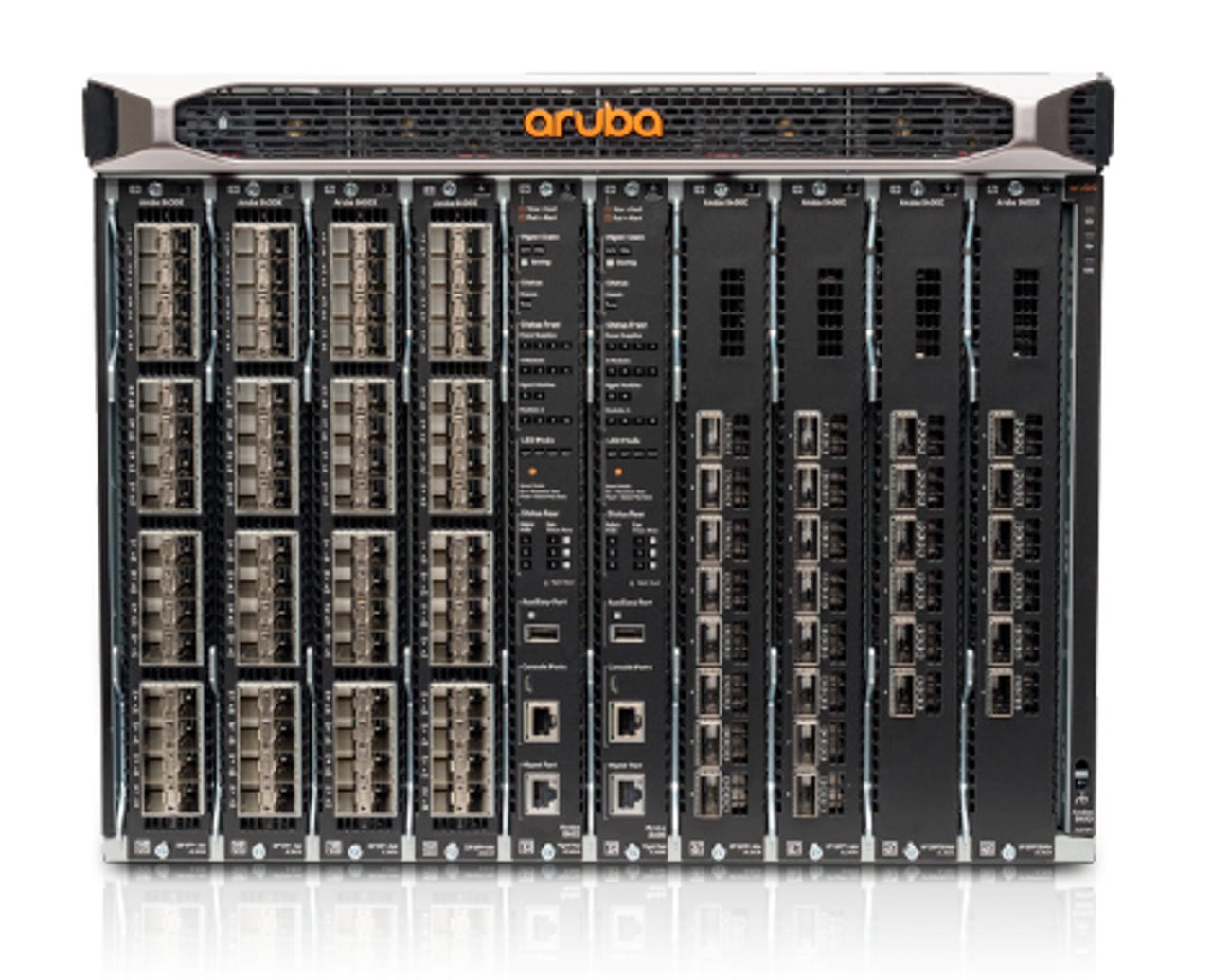HPE Aruba introduces new integrated asset tracking solution and core switches

Aruba Networks is stepping up its Internet of Things (IoT) game with a location-based asset tracking solution that's integrated into its wireless platform.
According to the company, the new asset tracking solution addresses the problem of misplaced, lost, or stolen inventory in industries such as healthcare, retail, and warehousing, which can have a significant impact on overheads, staff productivity, quality of service, and revenue.
Aruba claims no other networking vendor provides a fully-integrated wireless asset tracking solution, thereby eliminating the need to invest in a separate network.
The asset tracking solution includes new Bluetooth Low Energy (BLE) tags, an asset tag configuration application, advancements to ArubaOS, and new features for the Aruba Meridian AppMaker.
Advancements to the ArubaOS software means BLE-enabled access points and sensors are able to act as asset tags, creating a sensory network. Using the asset tag configuration app, assets can be designated with names, photos, and optional IDs which are immediately saved in a central cloud database.
Organisations can also create their own asset tracking app for iOS and Android with the Meridian AppMaker, which now provides a software development kit and APIs for third-party integration and custom use cases.
Currently, networking rival Cisco uses Mist's recently launched BLE platform for asset visibility, which is integrated into Cisco's wireless products. In July last year, Cisco made a strategic investment into Mist to boost its BLE beacon and wireless machine learning technology.

Aruba 8400x Switch
Aruba has simultaneously announced the launch of the 8400 Core Switch with 19.2Tbps switching capacity. The virtual switching framework with two chassis scales up to 512 10GbE, 128 40GbE, or 96 100GbE ports.
The 8400 core switch is powered by Aruba's new software system ArubaOS-CX, designed to automate network tasks.
The system's Network Analytics Engine (NAE) provides the ability to monitor and troubleshoot network, system, application, and security-related issues through python agents and REST APIs. Built into the NAE is a time series database to enable customers to conduct historical troubleshooting and analysis.
"By gaining early visibility and insights into network connectivity and traffic patterns, and using network analytics and policy to predict and resolve problems before they result in significant network downtime, organisations can save valuable time and resources while greatly reducing costs," Aruba said.
Aruba has also unveiled its 2930M Switch Series, designed for wireless LAN and IoT integration with unified security, PoE+ power, flexibility of on-premises Aruba AirWave or cloud-based Aruba Central management, and improved performance for campus, branch, and SMB networks.
The announcements come six months after CEO Meg Whitman highlighted the role Aruba will play in the company's IoT strategy moving forward.
"Through our Aruba offerings in security, analytics and connectivity, and our edge line converged IoT systems, we are building an ecosystem of partners and bringing unique solutions to this fast-growing market. I like to say we are going to be the IT in IoT," said Whitman, according to a Q4 2016 earnings call transcript.
The same month HPE announced the launch of its Mobile Virtual Network Enabler to spur an ecosystem of specialised IoT mobile virtual network operators that resell connectivity directly to customers at price points optimised for large scale machine-to-machine and IoT deployments.
Jeff Edlund, HPE CTO of communications and media solutions, software and services, said last year that traditional carriers operate on business models that are not lucrative in the context of IoT, given the typically small amounts of data consumed by internet-connected devices.
HPE also announced in November the launch of its Universal IoT Platform designed to automate deployments of lightweight sensors such as LoRa and SIGFOX to connect vehicles, buildings, and cities.
The platform also provides IoT monitoring, reporting, and analytics services, and is tied to Aruba assets such as the ClearPass Universal Profiler, designed to provide granular visibility into connected devices, and 2540 IoT-ready Access Switches for mobile users.